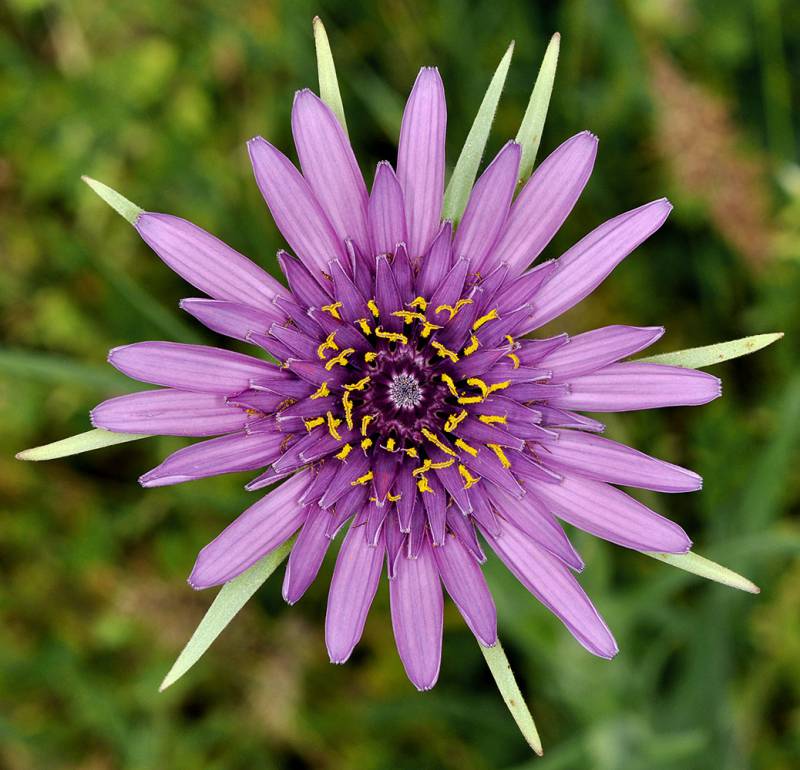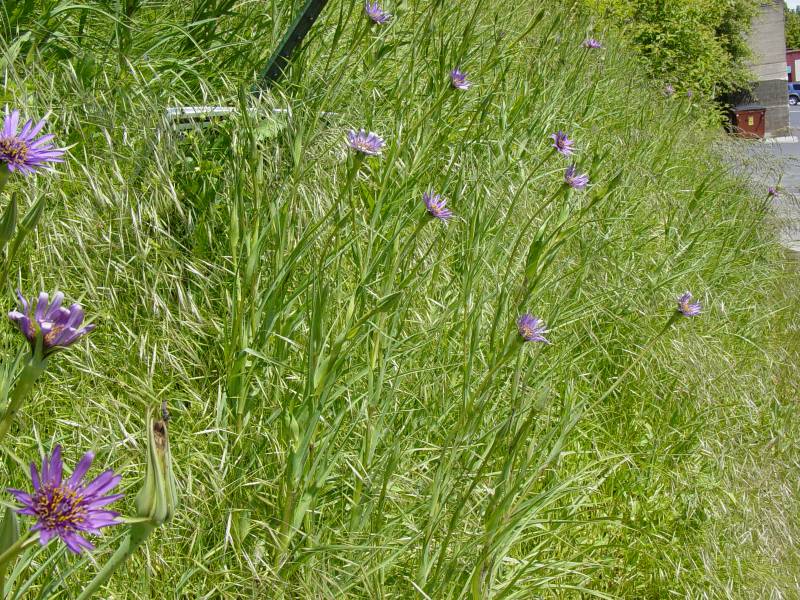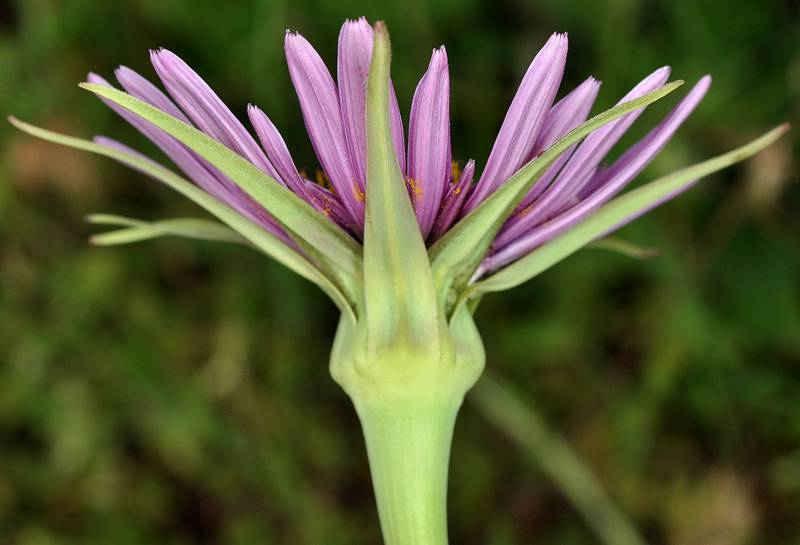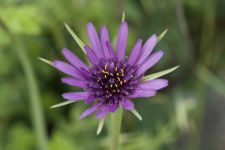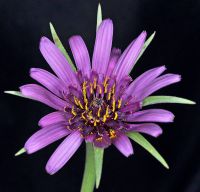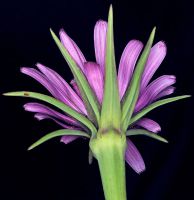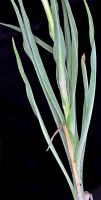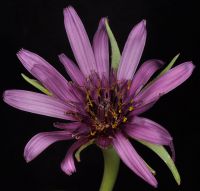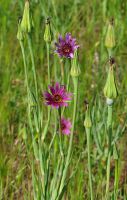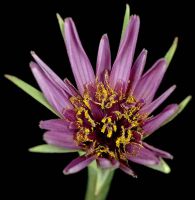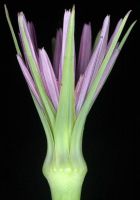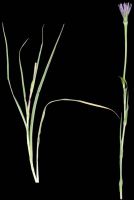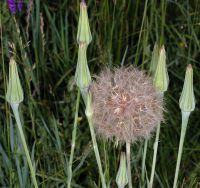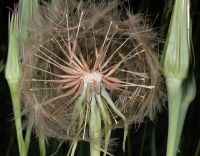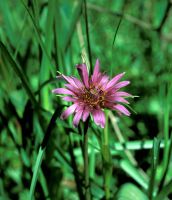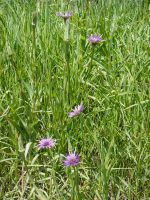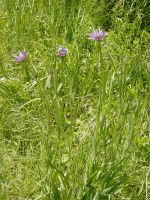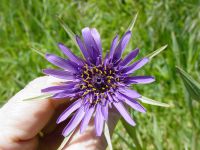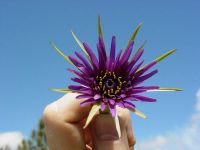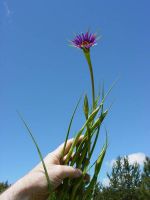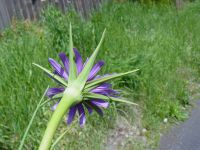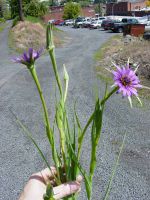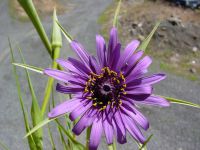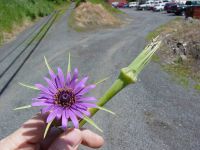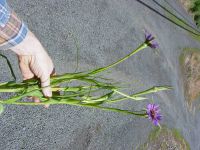Distribution: Occurring on both sides of the Cascades crest in Washington; British Columbia to California, east across North America to the Atlantic Coast.
Habitat: Roadsides, fields and waste places, usually where moist.
Flowers: April-August
Origin: Introduced from Europe
Growth Duration: Biennial
Conservation Status: Not of concern
Pollination: Bees, flies, beetles, wasps
Glabrous biennial, 4-10 dm. tall, often branched, with milky juice.
Leaves elongate, up to 30 cm. long and 2 cm. wide, tapering gradually from the base.
Heads solitary at the ends of branches, the peduncles enlarged and hollow under the heads; involucral bracts in a single series, equal, 5-11, 2.5-4 cm. long in flower, distinctly surpassing the purple, ligulate corollas, elongating to 4-7 cm. in fruit; pappus of a single series of whitish, uneven-length, plumose bristles, the plume branches interwebbed.
Achenes stout, 2.5-4 cm. long, the body 10-16 mm. long, abruptly contracted to the long, slender beak.
Publication: Sp. Pl. 2: 789. 1753. 1753.
PNW Herbaria: Specimen records of Tragopogon porrifolius in the Consortium of Pacific Northwest Herbaria database
WA Flora Checklist: Tragopogon porrifolius checklist entry
OregonFlora: Tragopogon porrifolius information
E-Flora BC: Tragopogon porrifolius atlas page
CalPhotos: Tragopogon porrifolius photos

